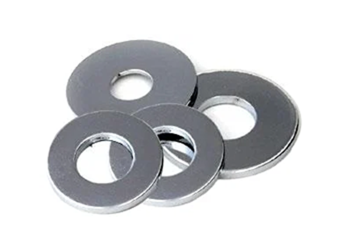Nov . 22, 2024 08:07 Back to list
what screws to use for cabinets
What Screws to Use for Cabinets A Comprehensive Guide
When it comes to assembling or installing cabinets, one of the most crucial aspects to consider is the type of screws you will use. The right screws not only ensure the structural integrity of the cabinets but also enhance their durability and performance. In this article, we’ll delve into the various types of screws suitable for cabinets, their applications, and tips for selecting the best option for your project.
Types of Screws Used in Cabinetry
1. Wood Screws Wood screws are the most commonly used screws for cabinets. They are designed to be driven directly into wood without the need for a pre-drilled hole. These screws typically feature a sharp point and coarse threads, which help them grip the wood effectively. Wood screws are ideal for attaching cabinet faces, securing shelves, and joining pieces together.
2. Pocket Hole Screws Pocket hole screws are essential for constructing cabinets with a clean and hidden fastening method. This type of screw requires a special pocket hole jig that drills angled holes into the wood. The screws are then inserted at an angle, creating a sturdy joint without visible fasteners on the surface. This method is particularly useful for face frames and carcasses.
3. Self-Tapping Screws Self-tapping screws are designed to create their own thread as they are driven into the material. This feature makes them particularly suited for attaching metal hardware or components of cabinets. If you're working with metal brackets or thin gauge materials, self-tapping screws are an excellent choice because they eliminate the need to pre-drill holes.
4. Confirmat Screws Confirmat screws are specifically engineered for particle board and medium-density fiberboard (MDF) typically used in cabinet construction. They have a unique head design that allows for a tight grip without damaging the material. These screws require pre-drilling but offer exceptional holding power, making them perfect for flat-pack and modular furniture.
5. Euro Screws Euro screws, or cam screws, are utilized in many modern cabinet designs, especially for ready-to-assemble (RTA) furniture. The screw works in conjunction with a cam lock, allowing for easy assembly and disassembly. This type of screw is beneficial for providing a stable connection while remaining accessible for future adjustments.
Choosing the Right Screw
When selecting screws for your cabinets, consider the following factors
what screws to use for cabinets

- Material Choose screws made from corrosion-resistant materials (like stainless steel or coated screws) for areas that may encounter moisture or humidity. This is particularly important in kitchens and bathrooms.
- Length The length of the screw should correspond to the thickness of the materials being joined. Ensure you choose screws long enough to provide a secure hold without protruding excessively.
- Head Type The head of the screw impacts its visibility and the tools needed for installation. There are various head types such as flat, pan, or rounded. Flat heads are great for countersinking, while pan heads offer a larger surface for fastening.
- Thread Type Consider whether you need coarse threads for quick engagement with wood or fine threads for metal applications. If in doubt, opt for screws designed specifically for the material you are working with.
Installation Tips
- Pilot Holes For hardwood or dense materials, always drill pilot holes to prevent splitting. This is especially true for wood screws and pocket hole screws.
- Countersinking For a professional finish, countersink the screw heads. This allows for a flush surface and can be filled with wood filler or putty if desired.
- Tightening Over-tightening screws can lead to damage, especially in softer woods or composite materials. Ensure screws are snug but do not force them.
Conclusion
Choosing the right screws for cabinets is essential for ensuring longevity and functionality. With an understanding of the various types of screws available and careful consideration of your specific needs, you can successfully complete your cabinetry projects with confidence. Whether you’re a seasoned woodworker or a DIY enthusiast, selecting the right fasteners will lead to beautifully finished, sturdy cabinets that stand the test of time.


